Great in every way, this is the region of massive seas, ancient forests and edge-of-the-earth towns. But when nature gives way it can be still, serene and welcoming – a land tamed by almost 200 years of farming.
A visit to the Great Southern is not just about the region's spectacular and unique natural environment, it is also about wine, food, history and indulgence.
This region is that little bit further away along a slightly less-trodden track, but isolation has given the Great Southern an opportunity to develop its own niche, true to the unique soul of the ancient land. Its inhabitants range from the Noongar people, the mariners and fisherfolk, to the many hundreds of thousands of native animals who live in the forests, and the close-knit farming communities who work the land and spend summer on the shores of the Southern Ocean when the harvest is done, year after year, generation after generation.
There are so many reasons to pounce upon this unsuspecting
corner of the world. A love of great food and wine is intrinsic to the culture. With the pristine seas delivering seafood, and the prime agricultural land acting as a food bowl for the state, the region's chefs are serving up inspired fare.
The Great Southern has been doing great wine for a lot longer than most realise, across five sub-regions, each with a distinct terroir. Mt Barker has celebrated 50 years of grape growing, and at the QANTAS Wine Show of Western Australia, Mt Barker wines were hot-ticket items. Connoisseur travellers are well rewarded with fantastic scenery and perfectly matched cuisine.
The Great Southern's spectacular coastline, forests and mountain wilderness are some of the most amazing you'll see. Attractions like
the Gap and Natural Bridge in Albany, and the Granite Skywalk in the Porongurup Range join the Valley of the Giants Tree Top Walk atop any nature lover's bucket list.
Board a charter from Albany during whale-watching season. Humpbacks and southern right whales gather in sheltered bays along the south coast, visible also from sighting platforms along the cliffs. To the east of Albany in Bremer Bay, an enormous pod of killer whales congregates over a deep-sea hotspot in the early months of the year. A tour is not to be missed!
The Great Southern region is big, so if you can, add a day or two to your travel plans, take a detour from the Albany Highway at Beaufort River and head on a journey through five of the Great Southern region's Hidden Treasures – hinterland towns that include inland Katanning, and loop you back onto the highway at Cranbrook.
WHEN TO GO
Locals will tell you their favourite time of year is autumn. The region has a stillness that sets the scene for alfresco winery lunches, mountain biking, bushwalking and coastal treks.
Winter is spectacular, as the Southern Ocean unleashes all its fury. Whales are about in large numbers from June to October. Some days are gloriously still and sunny, and yes, others can be cold and wet. If a big front comes in, outdoor activities are delayed in favour of roaring log fires, big reds and hearty meals.
Spring is the season for wildflowers, with thousands upon thousands of species blooming. Many birds, including the splendid blue wren, are in full song.
Mild southern summers offer a lovely reprieve from the northern heat, and are great for a cool swim after hiking through shady forests, or mountain-biking the pristine trails.
FUN FACTS
-
Straight out of a Doctor Who or Get Smart episode, the phone box in Porongurup is used by the locals as a landmark. It also signifies the start of the scenic tourist drive.
-
The Albany Highway was once a Noongar track connecting tribes, and used as a trade route between Perth and Albany.
-
Cloud formations on the Stirling Ranges appear surreal in winter, and sometimes it can even snow!
-
The Great Southern produces 37 per cent of all grapes grown in WA.
-
Albany was the final departure point for the majority of ANZACs during the First World War.

The Gap, Albany (photography Andrew Halsall).
Albany Coast
Albany is the Great Southern's regional city. Imposing bald mountains and cliffs are relentlessly pounded by the sea, creating landforms that make you want to get out there, explore and feel the wind in your hair. The rugged beauty of the coast is contrasted with calm bays and white sandy beaches. The landscape of King George Sound was explored by the Dutch in the 17th century, and a port was founded in 1826 – WA's first European settlement. Albany's CBD offers fantastic historic pubs and hotels (interspersed with convict relics), plus wine bars and restaurants with log fires in the cooler months, and alfresco options when it's warm. A wine sub-region in its own right, its wineries surround the town, and are worth a drop in.
Denmark Coast
Once a hippie town, Denmark has come of age as the place to go, and the setting couldn't be more perfect. The friendly town is surrounded by towering karri forests, superb wine country that is pumping out award winners, chic to rustic restaurants and cafes, and accommodation choices so good that they are destinations in and of themselves. All this by a luminous coastline that is wild in some areas, exquisite and tranquil in others.
Mt Barker & Porongurup
Two mountain ranges, each more than a billion years old, dominate the ancient landscape. Rich with wildflowers, forest, hiking trails and bizarre rock formations, this wilderness is flanked by award-winning wineries, foodie haunts and cosy cottages. Mt Barker is small but still the centre of the region, with quaint settlements in Kendenup, Narrikup, Rocky Gully and Porongurup.
DISCOVER THE HIDDEN TREASURES OF THE GREAT SOUTHERN
The Great Southern is home to a collection of hinterland shires, steeped in the heritage of settlers both early and more recent. These Hidden Treasures offer a unique glimpse of the backbone of WA's farming communities, grand old colonial homesteads contrasting with today's huge grain operations, all mixed in with warm country charm.
SHIRE OF BROOMEHILL TAMBELLUP
Classic farming communities, these two small townships are surrounded by huge farms.
A slice of history
The Tambellup Heritage Trail takes in the history of the early settlement, the rich Noongar culture around the Gordon River, and the former Aboriginal Reserve.
The Corner Shop Museum in the old Tambellup Stationmaster's House has original rooms, furniture and artefacts.
Walk through the village from the 100-year-old Broomehill Post Office, past sites like St Elizabeth's Church, (originally the town police station), the Museum (a treasure trove of old-school machinery and memorabilia), and the heritage-listed Jones Building, built in 1911 as a general store selling everything from flour to bullets. Today, you can drop in for a taste of history and local wines.
You can also walk the Holland Track, carved out from Albany to Coolgardie in 1893 by John Holland and his party. Keen 4WD enthusiasts can drive it all the way to the Goldfields – it's one of the best outback adventures to be had. Pick up a map at the Broomehill shire office, and see the beautiful mosaics on the wall while you're there.
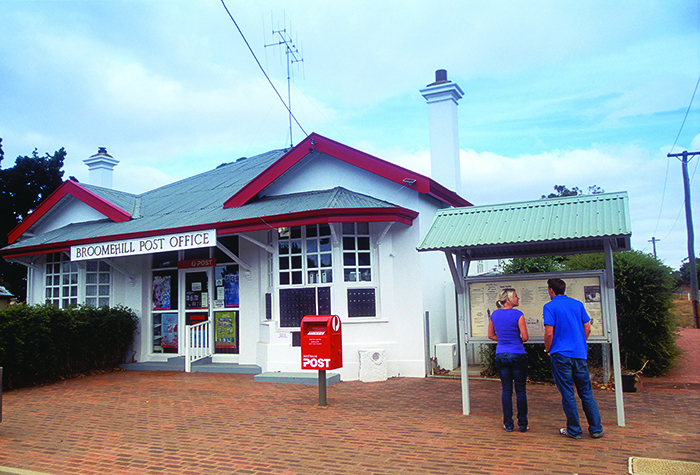
The 100-year-old Broomehill Post Office (photography Tourism WA).
Stop for lunch
The Tambellup Hotel offers counter lunches, or the Post Cafe has coffee and cake. Feel like a picnic? Pop into town for supplies, and visit the black swans at the Gordon River Reserve. Saggers Pool is another great riverside picnic site.
Diprose Park has a children's play area, and barbecues under the gum trees. Cross one of the oldest bridges in WA (carefully) to the Hayfield Reserve, and enjoy the trees and animals, the local pool, and the old Pioneer grave.
In Broomehill, Holland Park is a lovely shady spot, as is the Centenary Park. Stretch your legs after lunch and explore the surrounding bushland.
Explore The Shire
The cheeky, mischeivous Willy Wagtail features in local Noongar culture, and can be spotted around the shire. A famous Tambellup Big Willy, made from local timber, stands sentry at the town gates, welcoming visitors.
SHIRE OF CRANBROOK Cranbrook, Tenterden & Frankland River
Home to the major silos, expect to see trucks carting grain into Cranbrook. This is an RV-friendly town on Great Southern Highway, 4km off Albany Highway, perfect for overnight stops.
Cranbrook do and see
From Sukey Hill Lookout, 5km east of Cranbrook off the Salt River Road, view pinkish salt lakes to the north and east, farmlands to the west, and the Stirling Range to the south, plus a carpet of wildflowers in spring.
The Heritage Cranbrook Museum, formerly the Station Master's House, is packed with memorabilia and well worth a peek – call 0407 261 123 for information about visiting.
The historic 27 Mile Dam site explores the era of the drovers who stopped there with their thirsty livestock on the way to market between Cranbrook and Frankland River.
And take a drive through the Frankland River wine region – some of its wineries have made James Halliday's top 100.

Cranbrook Museum (photography Tourism WA).
SHIRE OF GNOWANGERUP Borden & the Stirling Ranges; Gnowangerup and Ongerup
The National Heritage-listed Stirling Range National Park features some of the best mountain walks in WA, plus the state's best rock climbing and abseiling. Nearby Borden offers picturesque farming country, with campgrounds, B&Bs, farmsteads, retreats and a pub.
Keen campers should head to Stirling Range Retreat at Chester Pass. It's is an accredited eco-tourism destination with powered and unpowered camp sites.
The Stirling Range itself is renowned internationally for its diverse and prolific bird life, as well as providing a home to more than 1500 species of wildflower. In spring, there are daily bus tours to see the magnificent floral displays, departing from Stirling Range Retreat. Dawn and dusk bird walks, led by BirdLife Australia, leave from the same place.
Bird lovers can see the endangered malleefowl in its natural environment at The Yongergnow Malleefowl Centre in Ongerup, where you'll also find interpretive displays, an aviary, gallery, bush-walking trails and more.
Up for a challenge? The Stirling Ridge Walk is an extreme extended mountain walk for experienced, well-prepared hikers that requires a two-night bivouac.
SHIRE OF KENT Nyabing and Pingrup
If you love history, the Shire of Kent boasts many fully intact pioneering buildings, such as Settlers Hall. Many original settler families still reside within the shire on family farms that have been handed down from one generation to the next.
The pretty shire is home to pink salt lakes, abundant wildlife, Lake Bryde, the historic Holland's Track, and even parts of the infamous Rabbit-proof Fence.
During seeding and harvest, the countryside comes alive with the cultivation of an array of colourful crops. Many beautiful species of orchids – including the rare Spider Orchid – can be spotted in the bushlands and on nature reserves throughout the shire.
The wildflower season runs from September to October, and this is the best time to visit. March is also great – Pingrup hosts its annual races, a huge event with wine tasting, entertainment and Two Up (plus it's an excuse to dress up).
Summit talks
Bluff Knoll 1094.97m
Toolbrunup Peak 1052m
Ellen Peak 1012m
Mt Trio 856m
Mt Magog 856m
Mt Hassel 847m
Talyuberlup 783m

Bluff Knoll.
ESCAPE TO THE DAILY GRIND...
The 16th century replica Lily Dutch windmill on Chester Pass Road was built by hand by its owner, Mr Pleun Hitzert, using recycled bricks and timber from the old Albany jetty. And it works! The authentic ground-sail mill is fully operational, producing organic, wholemeal and white spelt flour for sale. The Lily is open for accommodation and guided tours.
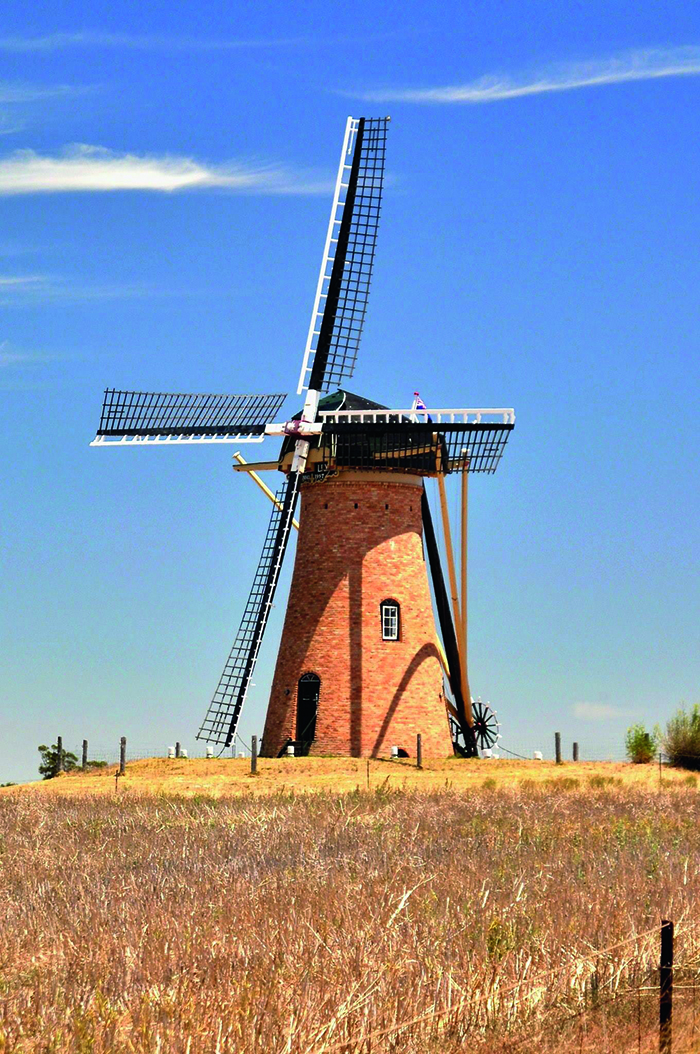
The Lily Dutch windmill.
SHIRE OF KATANNING
At the heart of the Great Southern is Katanning, one of the most multicultural towns in WA, with more than 40 resident races and religions, all centred on farming.
KATANNING TOP 5
-
Only in wa
Head to the sheep auctions every Wednesday at the Katanning Sale Yards. They're the largest in the southern hemisphere, with thousands of sheep, barking sheep dogs and some very serious buyers in attendance. There's also seriously good food to be had.
-
At Katanning Miniature Railway kids can ride reduced-scale steam and diesel locomotives around the track, then refuel with a bite to eat in the station tearooms. Pulling out of the station every second and fourth Sunday at the All Ages playground.
-
Stop by the Katanning Farmers Markets to check out the craft items, artisan goodies and plants up for sale. There's also a sausage sizzle for when you're done shopping. The markets are held every third Saturday of the month in the leisure centre.
-
Twitchers shouldn't miss the bird watching at Twonkwillingup Nature Reserve. Walk along the boardwalk trails over the wetlands, and spot 80-plus identified bird species. The 100ha Lake Ewlyamartupt, 18km east of Katanning, is home to 95 species of birds and is lovely for boating, picnicking and swimming.
-
Annual Events
Bush Poets Breakfast. Get your poetry on with breakfast ballads, tea and coffee. Feb.
The Katanning Harmony Festival. Celebrate all the cultures that call Katanning home. Highlights include the international food village, a fashion parade and displays. Mar.
WAMMCO International Agricultural Show. Enjoy rides, stalls, arts and crafts, vintage cars and machinery, equestrian events and evening fireworks. Oct.
SHIRE OF KOJONUP Kojonup & Muradup
The heart of the wool-growing country in the Great Southern and home to a thriving population (as well as a strong football team!), Kojonup is a two-hour drive from Perth, and just 160km from Albany.
This bustling rural town has a trademark warm country atmosphere, and is a popular destination for history buffs. The first white man to the region, the trailblazing Alfred Hillman, arrived in Kojonup in 1837. He'd been sent north by Governor Stirling from Albany and was cutting a path to the Swan River Settlement, when he was guided to a freshwater spring that became the basis for the town.
Today, Kojonup boasts 52 historical sites, including the Old School and Military Barracks, overlooking the spring. Pop in on Kodja Place and see the fabulous interpretive display that tells stories of Kojonup's cultures, both Noongar-Aboriginal and settler.
SHIRE OF WOODANILLING
With a smattering of very small towns, peaceful Woodanilling is a popular area for birdwatching enthusiasts, who can set up among locations bursting with native and rare wildflowers.
�Park life
Wignedyne Nature Reserve is filled with native flowers in spring. Kangaroos and bush wallabies can be seen at dusk in the paddocks surrounding the reserve, which are also known for parrots, lorikeets, blue wrens and the crested shrike-tit.
In Woodanilling's northeast, King Rock Reserve is an ideal spot for picnics, with panoramic views of the surrounding district.
Centenary Park and the Prime Ministers' Pathway in town are perfect for kids, who will love the adventure playground.
Food and Accomodation
Beaufort River Market Cafe on the Albany Highway offers meals and market stalls. Woodanilling Tavern – also known as Woody Tavern – serves both counter and restaurant meals, meanwhile, and provides comfortable accommodation. The Caravan Park on the Great Southern Highway features powered sites and caravan spots.
SHIRE OF JERRAMUNGUP Jerramungup & Bremer Bay
If you really want to get away from it all, this southernmost shire is the ultimate escape, with an amazingly diverse landscape. The shire takes in everything from gently rolling farmland to the craggy Barrens, magnificent rugged coastline to picturesque bays, and dry inland hills to rivers meandering through bushland to the ocean.
�Do and see
Named after John Septimus Roe, the first Surveyor General in Western Australia, Roe Park has a playground, skateboard track, basketball ring and barbecue facilities.
Lions Park offers shady spots for a barbecue lunch. It's also the pick-up and drop-off point for the coach line, and the starting point for the shire's premier historic walk.
The Jerramungup Heritage Trail visits sites such as the Old Powerhouse, the Former War Service Office, the interdenominational All Saints Community Church, and the Jerramungup Town Hall, which has become known as the Root Pickers Hall in recognition of fundraising efforts in the 1950s by volunteers who picked mallee roots.
Have You Seen this Bird?
If you have, the people at Birdlife Australia would very much like to hear from you! The Carnaby Black Cockatoo is an endangered species, and migrates to the Wheatbelt and Great Southern regions in spring. Visit birdlife.org.au/projects/carnabys-black-cockatoo-recovery for more details.
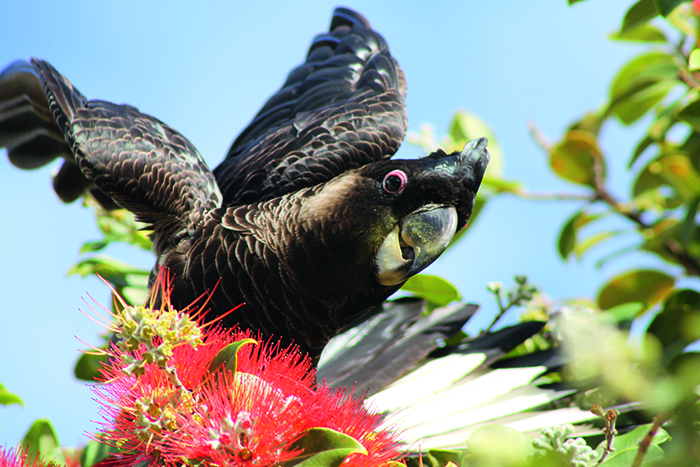
Carnaby Black Cockatoo.
THE HIDDEN TREASURES BLOOM FESTIVAL
Sep-Oct
If you're heading through the Great Southern in springtime, don't miss the fabulous annual Bloom Festival. Comprising more than 40 colourful wildflower- and spring-themed events scattered throughout the Hidden Treasures towns, the festival offers self-drive trails through fields of flowers, and an array of secret wildflower and orchid beds. It's a great chance to spot rare flowers endemic to the Great Southern region.
Top wildflower locations
-
Myrtle Benn Flora and Fauna Sanctuary, Kojonup
-
Farrar Dam Reserve, Kojonup
-
Stirling Range National Park, Borden
-
Fitzgerald River National Park, Bremer Bay
-
�Lake Magenta Nature Reserve, Pingrup
-
Corackerup Nature Reserve, Jerramungup
-
Chinocup Lake, Pingrup
-
�Banks of the Gordon River, Tambellup
-
Broomehill Golf Club & Boot Rock Reserve Cranbrook Wildflower Walk
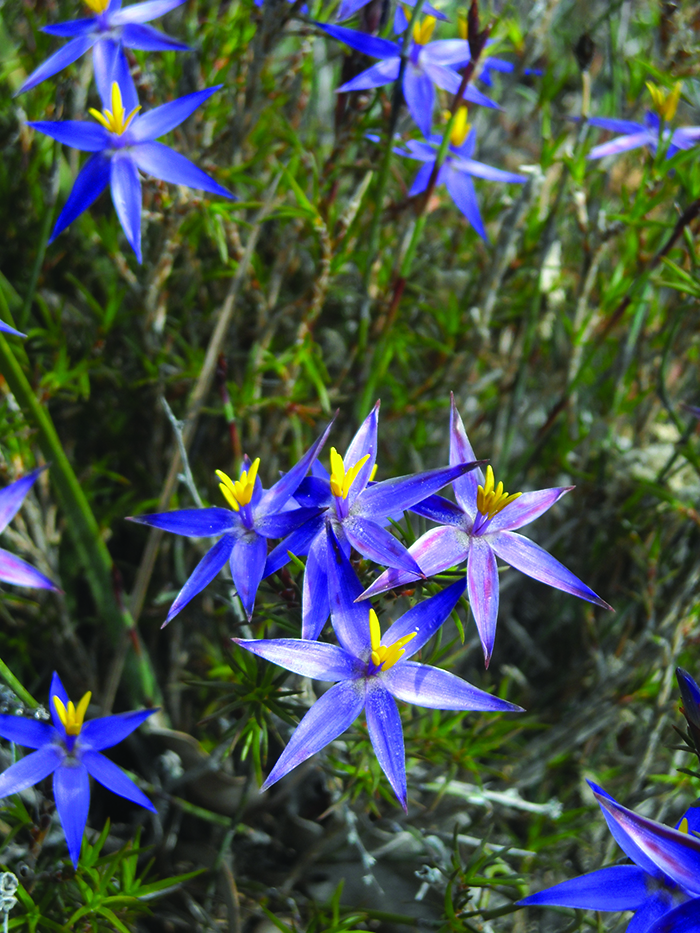
Tinsel lily (photography Andy Dolphin).
Spotlight on Bremer Bay
Situated next to the Bremer Bay River and just ten minutes' walk to the beach, this quaint town has a population of just 250 lucky people. Of course, that means everyone knows everyone else, and the pub (known as the Resort, with rooms, a bar and an awesome restaurant) is the centre of all the action. Bremer Bay has more facilities than you might expect (albeit only a voluntary police force) and that's because the town attracts so many tourists, not to mention thousands of youngsters from all over the Great Southern, who descend to celebrate New Year's Eve. But mostly the town's visitors number those who love surfing, fishing and living close to nature.
Long, protected white beaches, and nature at its most wild are the hallmarks of Bremer Bay. Its well-worn cliffs and headlands temper the might of the Southern Ocean, providing sheltered bays and perfect waves. Four-wheel drive or take a quad-bike tour to a remote corner of a pristine beach where you can go swimming and surfing – you'll feel completely free.
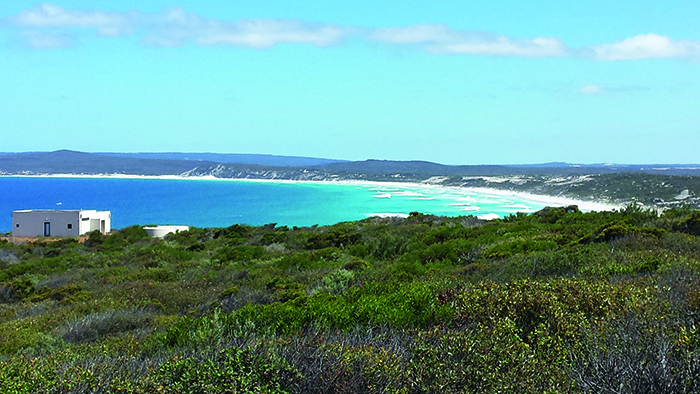
Bremer Bay.
Under the water is a kaleidoscope of colourful sponge life, sea slugs, tube worms, basket stars, striped fish, stingrays, soft corals and elusive weedy and leafy seadragons. Dive charters, guided snorkelling and equipment hire are all available from the dive shop in town.
Fishing is fantastic, either off the beach, out in the deep blue, or on the river. Launch your boat at Muirs Point – licences, gear and bait can be found in town.
Southern right and humpback whales call into Bremer Bay from August to October. They can easily be seen from the shore – go straight to Tooleburrup Hill. Point Ann in the Fitzgerald River National Park, 65km east of Bremer Bay, overlooks a famous nursery where southern right whales calve.
.jpg)
Orcas at play (photography Lourens Lee).
At the Bremer Bay Canyon, 70km out in the ocean, the southern hemisphere's largest population of killer whales (otherwise known as orca) has been discovered. Full-day expeditions to see these apex predators, also known as the 'wolves of the ocean' depart Bremer Bay daily from mid-January to mid-April.
Nature and trail lovers will be equally impressed on land. A total of 1893 types of wildflower have been recognised around Bremer – even vacant town blocks can be found to house rare and interesting species of orchid. If that's not enough, the Fitzgerald River National Park – one the largest and most botanically significant national parks in Australia – is on Bremer Bay's doorstep. Nearly twenty per cent of Western Australia's flora species, many endemic to the state, are found within the park.
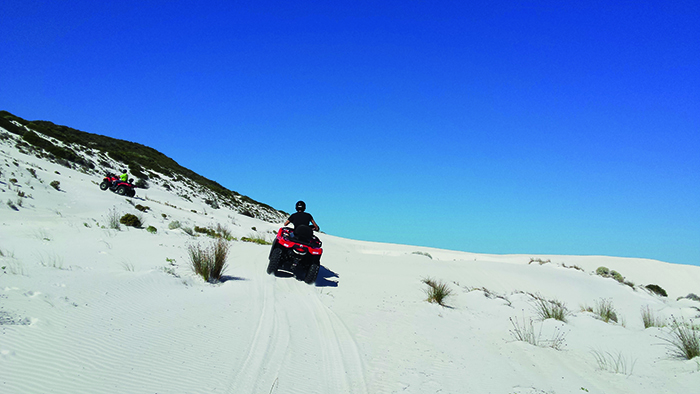
Quad-biking the dunes.
Bremer Bay is two hours from Albany and four and a half hours from Esperance. Accommodation options are good, with the resort, caravan parks and a tourist park, a lovely bed and breakfast, a wilderness retreat, a luxurious clifftop villa, and a selection of holiday houses and chalets to rent from the real estate office. If you've got your furry friend in tow, the Bremer Bay Resort & Tourist Park is pet-friendly.